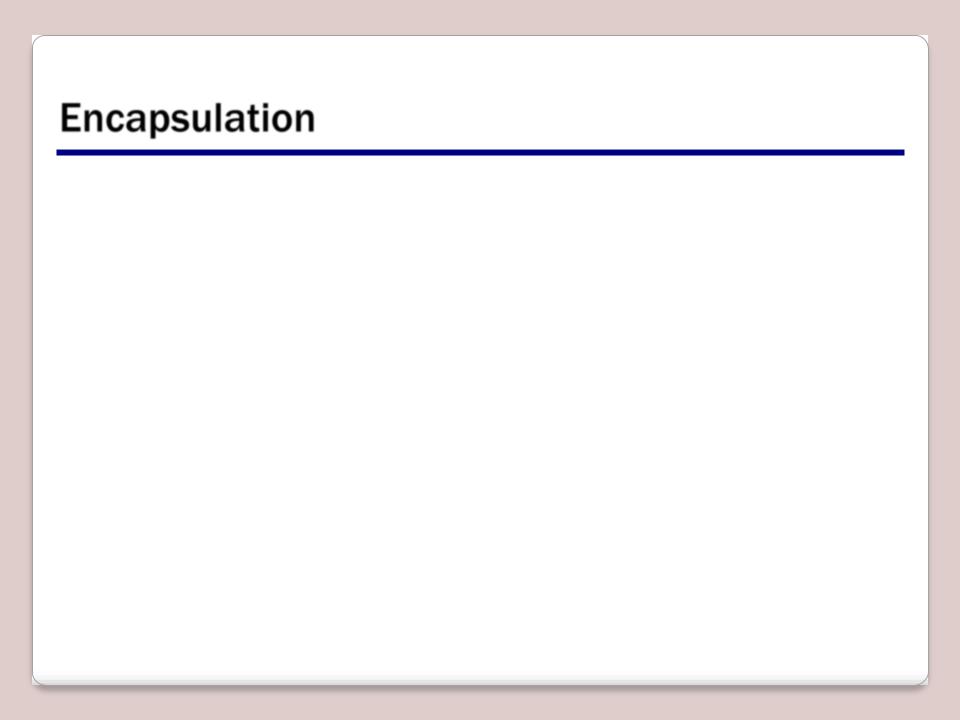
ТП (урок 2)
.pdf
The this Keyword
•The this keyword is a reference to the current instance of the class.
•You can use the this keyword to refer to any member of the current object.

Delegates
•Delegates are special objects that can hold a reference to a method with a specific signature.
•Here, you define a RectangleHandler delegate that can hold references to a method that returns void and accepts a single parameter of the Rectangle type.
•The signature of DisplayArea method matches the RectangleHandler delegate and therefore can be assigned to one of its instance.

Events
•Events are a way for a class to notify other classes or objects when something of interest happens.
•The class that sends the notification is called a publisher of the event.
•The class that receives the notification is called the subscriber of the event.

Subscribing to Events
•The signature of the event handler method matches the requirements of the event’s delegate.

Namespaces
•A namespace is a language element that allows you to organize code and create globally unique class names.
•The .NET Framework uses namespaces to organize all its classes.
–The System namespace groups all the fundamental classes.
–The System.Data namespace organizes classes for data access.
–The System.Web namespace is used for Web-related classes.

Static Members
•The static keyword is used to declare members that do not belong to individual objects but to a class itself.
•When an instance of a class is created, a separate copy is created for each instance field, but only one copy of a static field is shared by all instances.
•A static member cannot be referenced through an instance object. Instead, a static member is referenced through the class name.

Values and References
•A value type directly stores data within its memory.
•Reference types store only a reference to a memory location. The actual data is stored at the memory location being referred to.
•When you copy a reference type variable to another variable of the same type, only the references are copied. As a result, after the copy, both variables will point to the same object.

Encapsulation
•Encapsulation is a mechanism to restrict access to a class or class members in order to hide design decisions that are likely to change.
•Access modifiers control where a type or type member can be used.
Access modifier |
Description |
|
|
public |
Access is not restricted. |
private |
Access is restricted to the containing class. |
|
|
protected |
Access is restricted to the containing class and to any class that is derived |
|
directly or indirectly from the containing class. |
internal |
Access is restricted to the code in the same assembly. |
protected internal |
A combination of protected and internal—that is, access is restricted to any |
|
code in the same assembly and only to derived classes in another assembly. |
|
|

Inheritance
•Inheritance is an OOP feature that allows you to develop a class once, and then reuse that code over and over as the basis of new classes.
•The class whose functionality is inherited is called a base class.
•The class that inherits the functionality is called a derived class
•A derived class can also define additional features that make it different from the base class.
•Unlike classes, the structs do not support inheritance.

Inheritance - Example
